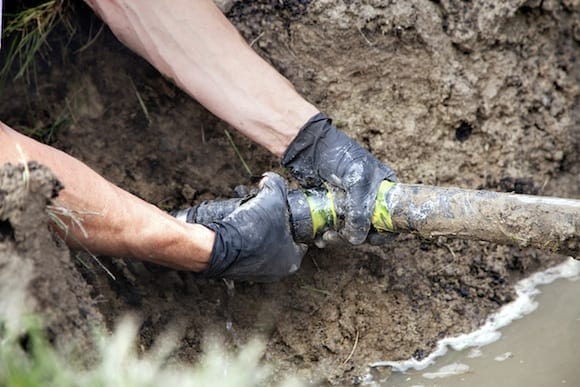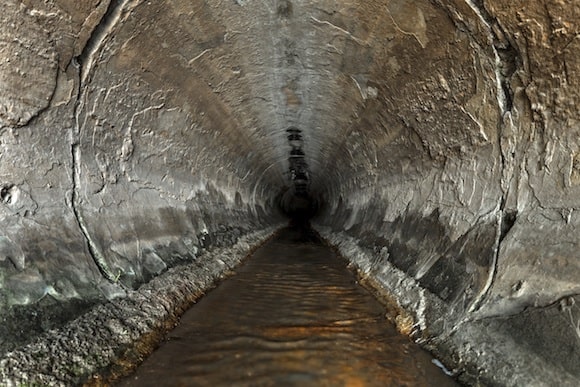When people hear the word “infrastructure,” roads, bridges, airports and railroads immediately come to mind — the things we see and use every day. It’s much less common, at least until recently, that people think of the pipes that deliver clean drinking water to our homes, convey wastewater to treatment facilities and drain stormwater from parking surfaces and roadways. Although this infrastructure is rarely seen, it’s equally important to our health and safety and underpins the development and growth of our communities.
Like homes and cars, all infrastructure, above and below ground, requires attention and maintenance in order to function properly and reach its maximum life expectancy. But as anyone who has had to buy a furnace, repair a foundation or install a new alternator knows, it’s much harder to invest appropriately in things we can’t see and don’t fully understand.
The Michigan Infrastructure & Transportation Association (MITA), which represents the workers who build roads and install water systems, is well aware of this reluctance — first to fully appreciate the value and necessity of things we can’t see and second to invest in their upkeep. They also understand, perhaps better than anyone, that the longer investments are delayed, the greater the cost is to make repairs and replacements.
That’s why MITA came to Public Sector Consultants (PSC) last year — to determine how much Michigan was investing in its underground infrastructure and whether that investment was sufficient to meet the challenge.
Bright Ideas spoke with Jon Beard, PSC consultant, about how he and his colleagues helped MITA determine that the state has a $284 to $563 million gap each year between what we should be spending on drinking water infrastructure and what we are spending.


When MITA first approached PSC about this project, what was their primary concern?
MITA is pretty well aware that underground infrastructure operates out of sight and out of mind, at least until there’s a time of failure or crisis. They were interested in raising awareness about the need to invest in maintaining and improving our infrastructure statewide. They asked PSC to use existing research in a new way to help inform the policy discussion around how much investment is necessary to sustain our water infrastructure, much like they did for roads.
The report talks about drinking water separately from stormwater and wastewater. Why is that?
We treat them differently for two reasons. First, the drinking water system is related to, but independent of, the wastewater and stormwater system. Second, it’s a function of the availability of data and information. Our report draws heavily on two surveys the U.S. Environmental Protection Agency (EPA) conducts every four years: one focuses specifically on drinking water and the other focuses on clean watershed needs, which mostly involves wastewater.
So let’s talk about drinking water first. How did PSC determine the annual investment needed for Michigan communities to maintain their drinking water systems?
We started with the EPA’s Drinking Water Infrastructure Needs Survey, which asks how much drinking water systems plan to invest over the next 20 years. These systems have to provide information because of a public health component. The EPA uses the responses from the survey sample to project out state and national costs for drinking water investment needs.
But you adjusted the EPA’s survey estimates, correct?
Yes. Whenever we’re working with estimates like this, the first thing we do is assess the quality of the data. Do the figures accurately reflect what’s going on? What we found is that, overall, this survey is regarded as well prepared, but many in the industry believe it underreports true need. For example, a separate EPA office conducted an assessment to determine how far off the survey estimate was due to factors that weren’t necessarily addressed, and it found that the original estimates were off by about 30 percent.
We also looked at reports from other organizations, like the American Water Works Association and the Congressional Budget Office, both of which indicated the original survey estimates were on the low side. That’s why we opted to use a range when talking about Michigan’s drinking water investment need. In addition, to enable an apples-to-apples comparison, we converted everything in the report to 2015 dollars.
In the end, we determined that in order to continue meeting standards and maintain our drinking water infrastructure, Michigan should be spending between $731 million and $1.01 billion on an average annual basis for the next 20 years.
What did PSC do, then, to determine what Michigan communities are currently spending on drinking water infrastructure?
The U.S. Census Bureau surveys local governments to collect information on how municipalities and states actually spend tax dollars, and there is a line item specifically related to drinking water capital outlay. Estimates from that survey show that, on average, Michigan has been investing $447 million per year.
To test that number, as well as the stormwater and wastewater spending numbers, we asked the Municipal Advisory Council of Michigan (MAC) to pull information on all water bonds in Michigan. We would expect the amount communities are spending on water infrastructure to roughly match the amount they’re borrowing, and the MAC data shows it does. Although there are some nuances and neither data set is perfect, they pretty much tell the same story.
So, if Michigan communities are investing $477 million per year, that puts the gap between what we should be spending on drinking water infrastructure and what we are spending at between $284 to $563 million each year.
That sounds like a lot of money. How would you characterize that gap?
It is a lot of money, but Michigan is home to slightly less than 10 million people, and roughly 75 percent of them get their drinking water from community systems. If you translate that amount on a per-capita basis, it equates to around $37 per person per year at the low end of the range and $75 per person per year at the high end, which works out to roughly $3 to $6 more on each person’s monthly water bill. These are back-of-the-envelope estimates, but for somewhere around $5 more a month on our water bills, we can solve this problem.
The report mentions that these figures were calculated before the crisis in Flint. Given that, what impact do you think Flint’s situation will have on the estimates?
There are a lot of numbers out there in terms of what will be necessary to make Flint whole again. I think the reality is that nobody really knows for sure at this point. A few years ago, the Lansing Board of Water and Light completed a project to replace lead service lines in Lansing and, using that experience, they estimated that doing the same thing in Flint would cost around $55 million. But that’s only the lead service lines; whether there are additional replacement needs for the distribution mains, that’s another question.
The report says that compared to drinking water estimates, figures for stormwater and wastewater “are much murkier.” Can you explain what you mean by that?
According to the EPA’s Clean Watersheds Needs Survey (CWNS), Michigan should be spending $2.14 billion on wastewater and stormwater infrastructure. But, for a number of reasons, we don’t have a great deal of confidence in that estimate. First, while the EPA’s survey on drinking water uses a statistical sampling approach where operators are required to respond, the CWNS simply puts out an open call asking communities to voluntarily tell them what projects they have in the pipe. As a result, it’s typically only the communities that plan to request funding through the state revolving loan fund that respond to the survey, which means true needs are significantly underreported.
Second, there are a number of other challenges with the survey estimate, including not attempting to collect information related to stormwater investment needs, which results in further underreporting; the inability to apply EPA’s methodology and scaler to the most recent survey results (like we did for drinking water) due to severe underreporting and the survey’s essential assessment of five-year needs with a few 20-year needs mixed in, rather than a legitimate assessment of 20-year needs. That makes it virtually impossible to calculate a sound average annual investment figure.
For example, the Department of Environmental Quality’s state coordinator was able to point to two projects alone—one in Lansing and one in Detroit—that, for different reasons, were not included in the survey and would have added another $1 billion to Michigan’s estimated need.
What are Michigan communities currently spending on wastewater and stormwater infrastructure?
Like with drinking water, we looked at data from the US Census Bureau’s Annual Survey of State and Local Finances and found that Michigan communities currently make an average annual investment of $691 million in wastewater and stormwater projects.
So what is the gap between need and current spending?
We weren’t comfortable calculating the gap here. As I mentioned earlier, the EPA’s “need” estimates don’t show the full picture. If you take what we’re currently spending per year ($691 million) and multiply it by five years ($3.5 billion) or 20 years ($13.9 billion), you can see that the EPA figure of $2.14 billion doesn’t align.
Fortunately, the state took the initiative a few years ago to start the Stormwater, Asset Management, and Wastewater Program where funding is provided to communities to conduct thorough assessments of their stormwater and wastewater infrastructure. The results are expected to provide much better information in the near future about communities’ true spending and long-term needs.
In your mind, what’s the next step? What do we do with the information in this report?
Our report took a 100,000-foot view of the issue — that is, we looked at the state as a whole. But the story for each community will be vastly different. Each community needs to look at its own long-term needs and answer the question of whether or not it’s spending enough to provide safe drinking water to its residents and appropriately manage and treat wastewater and stormwater.
What would you say is the takeaway for policymakers? Where does maintaining our water infrastructure fit in the hierarchy of state spending?
I think Flint is an unfortunate example of what can happen when our water systems aren’t well understood and maintained. Another example is what happened in Toledo when there were toxic algal blooms in Lake Erie and the water treatment plant wasn’t equipped to handle them. They had to shut the water off and start trucking it in for all of the city’s residents. If our drinking water systems don’t function properly, it puts everything else — our health, our safety, the environment and the economy — at risk.
If you think about this from a broader perspective, Michigan, in many ways, is defined by water; our lakes, rivers and streams define the character of our state. So, without safe, clean water, who are we?
PSC will continue its work on important infrastructure issues by facilitating the governor’s 21st Century Infrastructure Commission, which is charged with identifying best practices and long-term strategies for ensuring that all of Michigan’s infrastructure — transportation, water and sewer, and energy and communications — remains safe and efficient now and into the future. We look forward to the recommendations that come out of the commission’s work.


